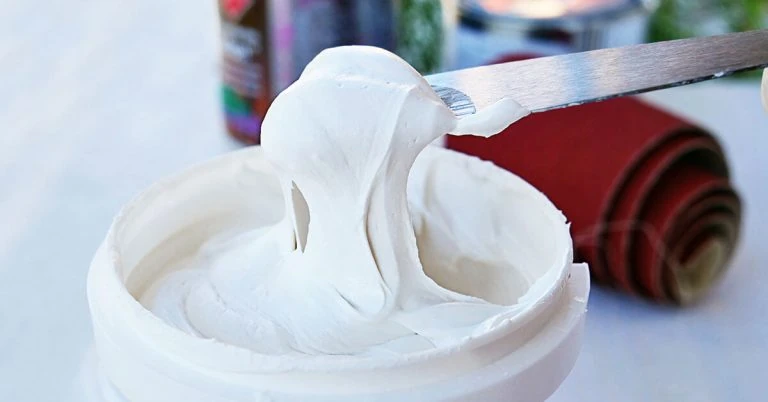Home Decorating Tips


Home Decorating Tips
What Is Patching Compound and How Do You Use It?
Posted on December 3, 2021
Last updated June 18, 2025
Seeing cracks and holes on your walls or surfaces is always a cause for concern. Because not only do they look unappealing, they may be signs of something that went wrong before, during, or after the building process. However, there is a workaround that can help you address these concerns and make your surface look good as new: patching compound.
A patching compound can be used on cracks or holes on concrete, wood, or cement. If you’re planning to fix these issues easily, why not consider a patching compound? Learn more about what it is and how you can apply it with this quick read.
What Is a Patching Compound?
As mentioned, a patching compound is used to fill holes, cracks, and/or damaged areas that are larger than 5mm, and are too large to be filled with a self-leveling smoothing compound. Some patching compounds in the market can be used for concrete, wood, or cement, although you may find varieties that can work on vinyl surfaces too.
Patching compound can be bought in either putty or powder form and is usually made of cement-based mortars or epoxy polyurethane. If you got a product made of the former, it’s usually applied using a putty knife or trowel. However, if it’s made of the latter, it can be used with a mortar or injected into the crack.
Can Patching Compound Be Used for Concrete?
It can! An advantage of using patching compound for concrete would be their ability to be smoothened or textured so that it can “blend” with the surrounding area. The only drawback would be that the color of the new “patch” may not match the old surface. However, this can be worked on with a new coat of concrete-friendly paint.
Tips on How to Use Patching Compound Properly
Interested in using a patching compound? Take note of these considerations first:
- Thoroughly inspect and check for the amount and location of cracks, holes, or surfaces that need to be fixed. Check the length and depth of the damaged areas too, and see if they are on interior or exterior surfaces.
- Determine the type of surface you’ll be working on to ensure that you get the patching compound best suited for it. You may also want to see if the surface can be exposed to other factors that can cause damage to it in the future.
- Once you’ve determined the extent of the damage, take note of how much patching compound you may need.
- Take note of projected timings, particularly drying time. A patching compound like Island Paints’ Island 300PC Patching Compound can take one to two hours to dry to touch, or overnight if you’re drying to recoat.
How Do You Use Patching Compound?
The answer to this question would depend on the form of product you will have. However, before using any type of patching compound, make sure you’re wearing personal protective equipment like gloves, masks, and/or protective clothing to prevent injuries and accidents on-site.
For starters, if you’re using a patching compound that is a putty, like the Island 300PC Patching Compound, use a putty knife to apply some of the product into the crack or hole. Make sure to leave some product slightly above the surface as well. Let it dry for one to two hours (for touch) or overnight (for recoats).
On the other hand, if you’re using a patching compound that comes as a powder, like Island Premium Paints’ Island Patching Powder, combine it with needed primers and sealers. Take note of the ideal ratios involving the patching compound and these substances:
- For concrete surfaces: Mix 4 liters of Island Paints’ Prima Primer #301 (or any similar concrete primer) with approximately 0.7 kilograms of the patching powder compound.
- For wooden surfaces: Combine 4 liters of Island Paints’ Island Wood Primer & Sealer (or any similar wood primer) with approximately 0.6 kilograms of the patching powder compound.
After these substances are thoroughly mixed, use a trowel to apply the patching compound onto the surface. Ensure that the patching compound is pushed into the crack or hole and that there is remaining material that’s pushed slightly above the surface. Let the area dry so it’s ready for a new coat of paint or stain.
You can also contact a professional to know more about a patching compound’s other uses. Plus, if you’re planning to use epoxy-based patching compounds, you can also ask them about the proper ways to apply and use them.
After you’ve applied and let your patching compound dry, you now have a surface that you can finish well with either paints or stains. Now, are you up for this challenge? With Island Premium Paints, you can!
Choose from a roster of paints and stains that can work on various surfaces. As the first local brand whose products have a Product Satisfaction Guarantee, you can find the items that’ll complete the transformation. Learn more home improvement tips and tricks, and how to work on cracks or holes on surfaces at the Island Premium Paints website today!
Sources:
https://www.thespruce.com/is-this-the-best-way-to-repair-concrete-cracks-844642
https://islandpaints.wpengine.com/home-decorating-tips/best-patching-material-tips/
https://islandpaints.wpengine.com/product/island-patching-powder/
Our Products
Our line of high quality paints and products will give your home or project the vibrancy it needs.
Explore Colors
Ready to explore colorful possibiliies today? View our popular paint colo combination palettes for great color schemes and room design ideas for interior and exteriors.



